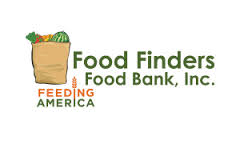
The report shows that 5.3 million seniors age 60 or older (7.3%) were food insecure in 2018, the most recent year for which data is available.In Indiana, the food insecurity rate for seniors is higher than the national average at 7.9%
The findings are released amidst the COVID-19 pandemic when up to 17 million more people are expected to face hunger due to rising unemployment and poverty rates according to analysis by Feeding America released in early April. Seniors – who are disproportionately impacted by the virus – are now asked to stay indoors and social distance, making it that much more challenging to access nutritious food. In sum, senior food insecurity is likely to remain a public health challenge in years to come.
“We can and must do more to care for our nation’s seniors who have so often spent their lifetimes caring for others,” said Feeding America CEO Claire Babineaux-Fontenot. “As the COVID-19 pandemic wreaks havoc across our country, senior populations are especially vulnerable. Along with the health risks, seniors should not also be at risk for hunger. Feeding America is committed to helping address senior hunger through programs that increase access to nutritious food for seniors now and as long as they need us.”
In examining the extent of the threat of hunger nationally among seniors in 2018, the report also provides the rates of senior hunger in each of the 50 states and the District of Columbia, as well as 51 metropolitan areas.
“It is disturbing to note that Indiana seniors experience food insecurity at a rate that is 3% higher than the national rate,” said Food Finders President/CEO Katy Bunder. “Clearly, the programs we have in place to assist senior citizens will not be enough in the aftermath of COVID-19. Food Finders must engage with partners throughout our territory to find an affordable way to provide food assistance to more senior citizens.”
Key findings include:
- Food-insecure seniors live in communities across the country, including all 50 states and Washington, D.C. In 2018, senior food insecurity rates at the state level range from 2.8% in Minnesota to 14.3% in the District of Columbia.
- Senior food insecurity in metro areas varies from 2.5% in the Minneapolis-St. Paul, Minnesota metro area to 15.6% in the Memphis, Tennessee metro area.
- Indiana, with 7.9% of seniors food insecure, falls in the middle end of that range.
- Seniors living in the South are most likely to be food insecure. Nine of ten states with the highest rates of food insecurity are located in the South and West.
Food insecurity has negative effects for individuals across the lifespan. For seniors, these effects can be particularly problematic given the unique health, economic, and nutritional challenges that can come with aging. The State of Senior Hunger also finds that food insecurity disproportionately affects seniors in certain socioeconomic groups. Specifically, in 2018, researchers found:
- Seniors who are racial or ethnic minorities, low-income or younger vs. older (age 60-69 vs. age 80+) were more likely to be affected by food insecurity.
- Seniors who reported a disability were disproportionately affected, with nearly 14% percent reporting food insecurity.
- Among food-insecure seniors, more than six in ten (60.1%) are female.
- Seniors who live with grandchildren are more likely to be food insecure than seniors who do not. One in six seniors in multi-generational households (16.2%) is food insecure, compared to 6.9% of seniors in households where there is no grandchild present.
- Nearly (64.8%) of food-insecure seniors have income above the federal poverty line, revealing that seniors with relatively higher incomes still struggle to get enough foo
For the fourth consecutive year,The State of Senior Hunger in America was produced by Feeding America, the nation’s largest hunger-relief charity with a nationwide network of 200 food banks. The study was conducted by researchers Dr. James P. Ziliak and Dr. Craig Gundersen and is the source for national-, state- and metro-level information about food insecurity among seniors age 60 and older. An additional report highlighting food insecurity among individuals ages 50-59 was also released for the second time as part of The State of Senior Hunger in America study series. The full reports can be found here.
The study was funded by the Enterprise Rent-A-Car Foundation through its Fill Your Tank program, a multi-year commitment made in 2016 in celebration of the company’s 60th anniversary and one of the largest donations aimed at fighting hunger. In addition to funding research efforts, the Fill Your Tank program has contributed to Feeding America’s senior hunger strategy and provided grants to local food banks to support senior hunger programs.
